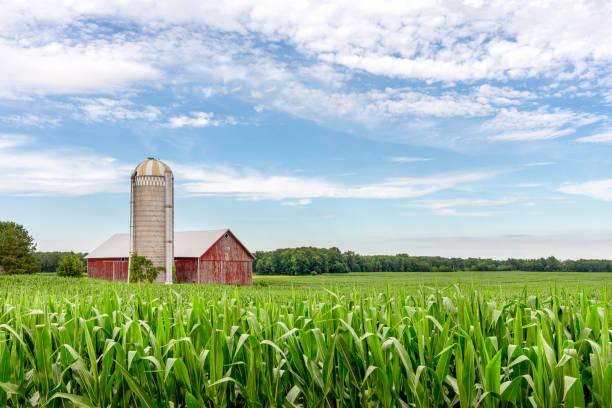
Welcome to Farmers Grant
The premier consulting firm specializing in financial support for farmers and agricultural producers. We assist with grant applications for programs like Farmers Market Promotion, Specialty Crop Block Grant, Beginning Farmer Loan, Organic Cost Share, and Farmers Assistance. We provide personalized strategies to maximize rewards and empower farmers to achieve their goals. Trust Farmers Grant for expert guidance in securing the financial assistance your farm deserves.
Now Featuring
Revenue Program Assistance
Revenue program provides financial aid to producers with a significant decrease in revenue in 2020 compared to 2018 or 2019. It targets overall revenue losses and includes previously ineligible commodities. Producers who participated in prior USDA programs may receive extra assistance if they still have revenue losses after accounting for other payments.

How Payments are Made
Payments are calculated on a whole-farm basis rather than commodity-by-commodity. To qualify, agricultural producers must have been actively farming during part of the 2020 calendar year and experienced a 15 percent decrease in allowable gross revenue compared to either their elected 2018 or 2019 calendar year revenue, or their expected 2020 revenue if no revenue was generated in 2018 or 2019.

You may calculate your expected payment using the following equation:
Expected Payment = ((Allowable Gross Revenue from either 2018 or 2019 - Allowable Gross Revenue from 2020) X Either 80% or 90% Payment Factor) - Any CFAP 1 and 2, PLIP, SMHPP, and 2020 ERP Payments
Payments will be issued after the application period ends on June 2, 2023.
Payments are subject to a per person and legal entity payment limitation of $125,000. USDA may factor the payments or reduce the maximum payment limitation if the total calculated payments exceed the available funding.
Program is funded through the Consolidated Appropriations Act of 2021.
Program Eligibility
Producers may be eligible for assistance for a range of agricultural commodities and allowable gross revenue sources.
Eligible and Ineligible Commodities
Eligible agricultural commodities, such as crops, aquaculture, livestock, livestock byproducts, and other animals or animal byproducts, which are produced as part of a farming operation and intended for commercial marketing. This encompasses commodities produced within the United States or those produced outside the country but by a producer located within the United States and marketed domestically.
The following commodities are not eligible.
Wild free-roaming animals.
Horses and other animals used or intended to be used for racing or wagering.
Aquatic species that do not meet the definition of aquaculture.
Cannabis sativa L. and any part of that plant that does not meet the definition of hemp.
Timber.


Allowable gross revenue includes revenue from:
Sales of agricultural commodities produced by the applicant,
including the portion of sales resulting from value added through post-production activities.
Sales of agricultural commodities an applicant purchased for resale,
less the cost or other basis of such commodities.
The taxable amount of cooperative distributions directly related to the sale of the agricultural commodities
produced by the applicant.
Benefits under certain federal agricultural programs and disaster programs.
This excludes conservation programs, the Coronavirus Food Assistance Program
1 (CFAP 1)and Coronavirus Food Assistance Program 2 (CFAP 2), the Pandemic Livestock Indemnity Program (PLIP), the Spot Market Hog Pandemic Program (SMHPP), and 2020 Emergency Relief Program (ERP) payments.




Crop insurance proceeds.
Payments issued through grant agreements with FSA for losses of agricultural commodities.
Grants through the National Oceanic and Atmospheric Administration (NOAA) and state program funds
providing direct payments for the loss of agricultural commodities or the loss of revenue from agricultural commodities.
Revenue from raised breeding livestock.
Revenue earned as a cattle feeder operation.
Other revenue directly related to the production of agricultural commodities
that IRS requires the applicant to report as income.
Pandemic Market Volatility Assistance Program (PMVAP) benefits
received shall be included for 2020 “allowable gross revenue” purposes, regardless of the calendar year in which the payment was received.
Additional Eligibility Requirements
Have been in the business of farming during at least part of the 2020 calendar year and had a 15 percent decrease in allowable gross revenue for the 2020 calendar year
as compared to:
The 2018 or 2019 calendar year, as elected by the producer, if they received allowable gross revenue during the 2018 or 2019 calendar years, or
The producers’ expected 2020 calendar year allowable gross revenue if the producer had no allowable gross revenue in 2018 or 2019.
Be a citizen of the United States, a resident alien, a partnership or organization structure organized under state law, an Indian Tribe or Tribal organization, or an eligible foreign person or foreign entity. Please note that United States federal, state, and local governments – including public schools – are not eligible.
Have an average adjusted gross income (AGI) of less than $900,000 for tax years 2016, 2017, and 2018. A person or legal entity whose average AGI for 2016, 2017, and 2018 exceeds $900,000, but whose 2020 AGI is $900,000 or less, must submit form FSA-1123 and provide a certification from a licensed CPA or attorney affirming the person’s or legal entity’s 2020 AGI is not more than $900,000 to be eligible for a payment. With respect to joint ventures and general partnerships, this AGI provision will be applied to each member of the joint venture and general partnership.
Comply with provisions of the “Highly Erodible Land and Wetland Conservation” regulations, often called the conservation compliance provisions. These will be addressed via form AD-1026 during the application process.
Not have a controlled substance violation.

info@farmersgrant.com
(855) 273-3863
2023 farmersgrant.com All Rights Reserved.